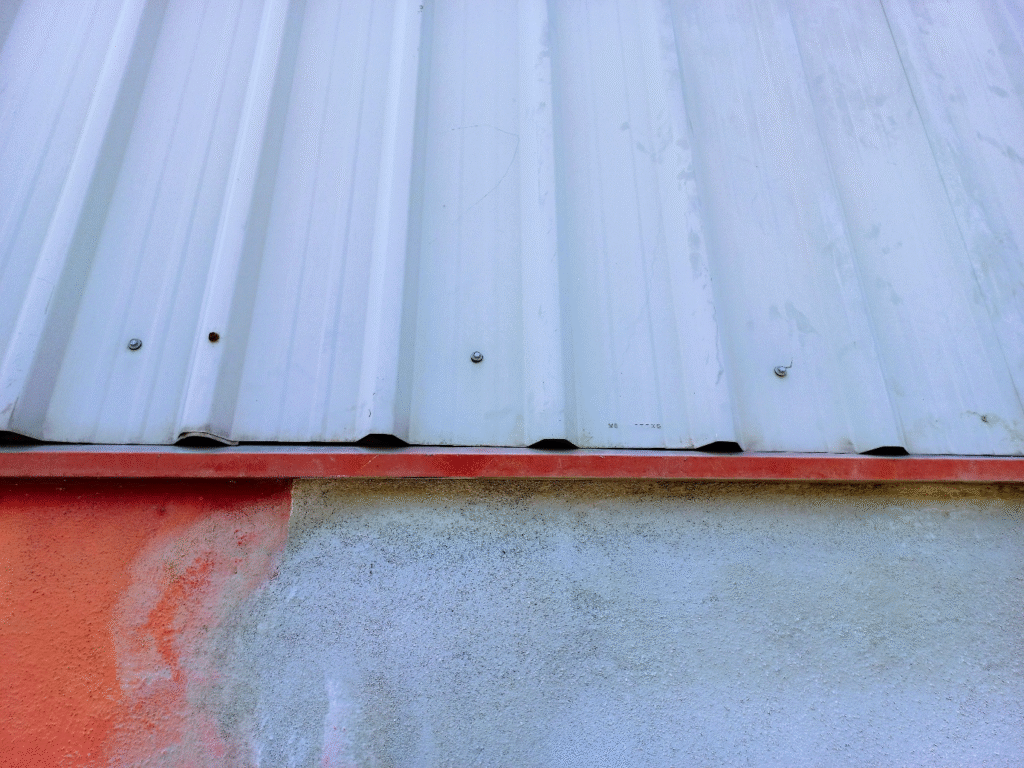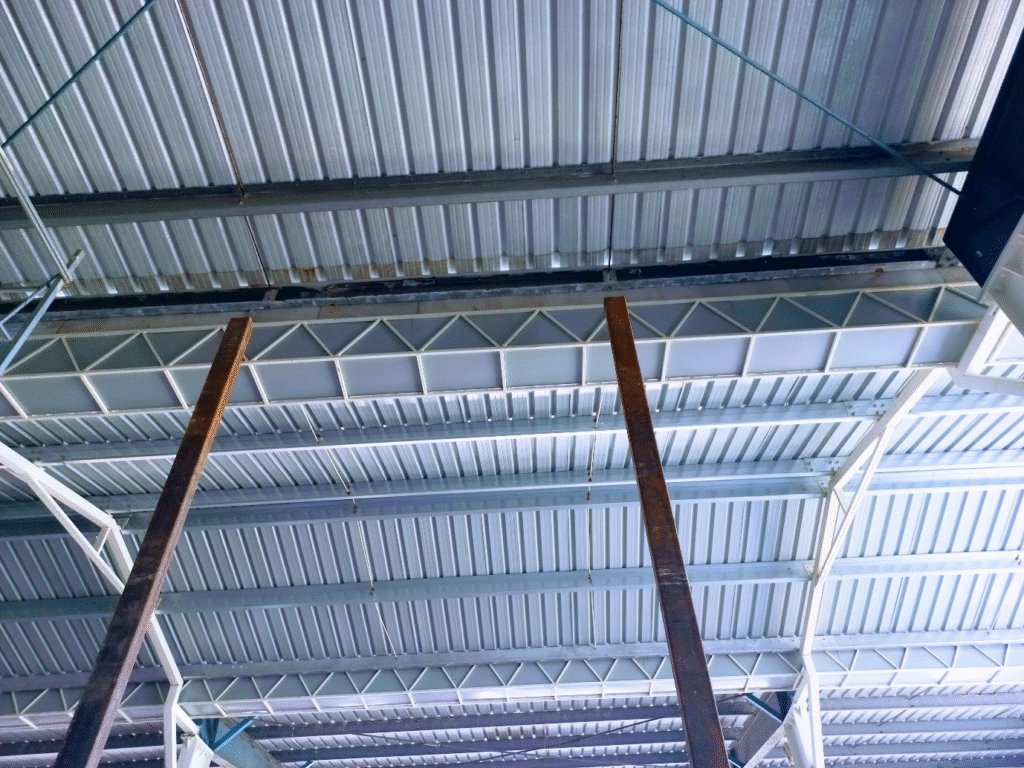The Rise of PEBs and the Unforeseen Food Safety Crisis
The global construction landscape has been fundamentally reshaped by the advent of Pre-Engineered Buildings (PEBs). These modular, highly customizable steel structures are fabricated in a factory, shipped to the site, and rapidly assembled.
The appeal of PEBs is undeniable: they are cost-effective, remarkably durable, and offer drastically reduced construction time compared to traditional brick-and-mortar structures.
From sprawling warehouses and state-of-the-art factories to institutional facilities, PEBs have become the default choice for modern industrial and commercial applications.
In a rapidly developing economy like India’s, where speed-to-market is critical, PEBs are ubiquitous, especially within the sensitive Food and Beverage (F&B) industry.
For dairy manufacturers, snack producers, beverage bottlers, and food distributors, the promise of a quick, large-scale PEB facility is a powerful driver.
However, beneath the gleaming metal panels and the efficiency metrics of PEBs lies a critical, often ignored, vulnerability: the inherent susceptibility to pest infestation.
Intended to be a robust, modern facility, PEBs can quickly become a five-star hotel for rodents, birds, and insects through Pest Entry Points (PEPs).
The oversight of PEPs in PEBs is not merely a maintenance issue.
PEPs in PEBs are a profound food safety, regulatory, and business risk that demands immediate attention from the entire construction and manufacturing ecosystem.

Gaps in a corrugated roof panel, which are potential pest entry points (PEPs) as seen from outside
The Anatomy of the Problem: How PEBs Become Pest Prone
While the fabrication and assembly process is fast and precise, it often creates unintended gaps that are tailor-made for pest entry. Such vulnerabilities are not isolated incidents but structural outcomes of the standard PEB design using corrugated metal panels.
1. The Corrugation Canyons: Entry at Ground Level and Wall Intersections
The most significant pest entry point lies in the very structure of the wall and roof materials: the corrugated metal sheets.
Consider the vertical sheets used for the walls. The corrugations—the series of parallel ridges and furrows—create a natural, continuous gap where the panel meets the floor slab or foundation. This gap, often a few centimetres high and following the contours of the panel, acts like an open doorway.
Example 1: A Dairy Factory Under Construction
During a recent visit to a dairy product factory under construction, I noticed that the walls and roofs were covered with corrugated metal sheets. The vertical sheets on walls featured corrugations with gaps that could easily allow pest entry.
The observation I made is common in PEBs used in food factories and warehouses across India.
A facility designed to manufacture highly sensitive products, such as dairy products, requires stringent hygiene, yet its primary enclosure provides multiple, unguarded entry points.
These gaps are precisely the size needed for mice, rats, lizards and insects to scurry into the structure.
Example 2: Rodent Damage in a Distribution Hub
Upon receiving an enquiry from a food product distributor, accompanied by pictures of rodent damage, we observed that their walls featured corrugated sheets, allowing mice easy entry.
For a food distributor, a rodent breach can lead to widespread damage of packaged goods, significant financial loss, and, crucially, a damaged reputation.
The simplicity of the pest entry point—a corrugated gap—is starkly contrasted by the complexity and expense of the resulting food contamination.
2. The Roof-to-Wall Seam: Highways for Pigeons and Sparrows
The vulnerability extends vertically to the roof. At the points where roofing sheets meet the side walls, another critical gap is created. These larger voids are perfect for the entry and harborage of birds, such as sparrows, mynahs and pigeons.
Once inside, birds contaminate raw materials, process areas, and finished products with droppings and nesting materials. Pest birds in a food business are not just an aesthetic issue; they are a source of pathogenic contamination that can shut down food production.
3. Fixture and Fastener Holes: The Tiny Tunnels
The PEB roof and wall panel installation process itself can also inadvertently create vulnerabilities. To fix roofing sheets to the structural girders, fixtures are driven through the metal. While these are often sealed, minor gaps, poor-quality sealing, or material degradation over time can leave small holes around these fasteners. These seemingly insignificant holes become entry points for smaller pests like lizards, mice, birds and insects, allowing them to bypass the main seal.
The Dire Consequences for the F&B Industry
For any industrial structure, pests are a nuisance. For the F&B sector, they represent an existential threat. The potential fallout from ignoring PEB pest entry points is multi-layered and severe:
- Product Contamination and Loss: Pests inside process areas directly contaminate food materials, leading to entire batches being discarded.
- Audit Failures: Facilities serving national and international markets are subject to rigorous audits (e.g., HACCP, ISO 22000, FSSAI). Uncontrolled pest entry is an automatic and catastrophic failure point.
- Regulatory Action and Penalties: Food safety authorities can issue hefty fines, mandate operational shutdowns, or even revoke licenses if pest presence is found inside a food business’s premises.
- Business Disruption and Reputational Damage: A high-profile contamination incident can destroy consumer trust overnight, leading to long-term loss of market share and revenue.

Numerous gaps in corrugated roof panels, which are potential pest entry points, as seen from inside
Why Post-Commissioning Pest Proofing is a Recipe for Failure
The default approach taken by many PEB owners is to address the pest entry points after the building is constructed and operational.
When we highlighted this issue to the building owner, they said they would address those gaps before commissioning production at their plant.
While this commitment is better than doing nothing, it underscores a fundamental misconception: Pest proofing a PEB is always a significant challenge post its commissioning.
- Access Issues: Reaching the roof seams, high wall junctions, and the foundation gaps of a completed industrial structure often requires specialised scaffolding, lifts, or temporary shutdowns—all adding time, complexity, and cost.
- Aesthetic and Structural Compromise: Retrofitting involves adding external fillers, brushes, or sealants. These solutions are often less durable, aesthetically inconsistent, and can fail more quickly than an integrated design element.
- The Race Against Time: In the rush to start production, these “final fixes” are often performed hastily or with subpar materials, leading to recurrent pest issues.
The Only Sustainable Solution: Integrated Pest-Proof PEB Design
The responsibility for a pest-proof structure must shift from the end-user’s maintenance team to the PEB fabricator and designer. Pest proofing must be viewed not as a costly add-on, but as an essential quality standard—an inherent part of a building designed for modern, sensitive industries.
1. The Fabricator’s Role: Designing Out the Risk
PEB manufacturers must adapt their work scope and design protocols to eliminate pest entry points proactively by:
- Customised Corrugation Fillers: Implementing durable, UV-resistant, and chemically inert proprietary fillers or mesh systems specifically designed to match the profile of the corrugated panels. These must be integrated during the panel assembly or erection phase, ensuring a tight, permanent seal at the wall-to-floor and roof-to-wall interfaces.
- Airtight Fastening Systems: Utilising self-sealing fasteners and high-quality, long-lasting gaskets around all penetrations to ensure every fixture hole is completely sealed.
- Pest-Proof Flashing: Designing and installing customised metal flashing at all junctures (e.g., panel ends, corners, and joints) that physically block the access points inherent in the corrugated profile.
2. The Food Factory Owner’s Mandate: Demanding a Pest-Proof Structure
Food and beverage companies must become more demanding clients. When procuring a PEB, the specification must clearly state: “Structure must be certified as pest-proofed against rodents, birds, and crawling insects from the point of handover.”
Building owners must adopt PEBs only after ascertaining that such buildings can be and have been pest-proofed before use.
Conclusion: Elevating the Standard of Pest Prevention in a PEB
The efficiency and cost-effectiveness of Pre-Engineered Buildings are undeniable. However, this success cannot come at the expense of food safety and hygiene standards. The food industry has reached a critical juncture where an integrated, structural solution is necessary to rectify the fundamental design oversight of unsealed corrugated panels.
PEB manufacturers possess the expertise to address the issue of pest entry through their structures.
Food and beverage company owners have the regulatory and business incentive to demand pest-proof PEBs.
By shifting pest proofing from a tedious post-commissioning chore to a mandatory design feature, the food and beverage industries can ensure that the next generation of industrial structures is not just fast and durable, but also fundamentally safe.
The future of industrial construction is pest-proof.
The time for bespoke, reactive solutions is over; the era of standardized, proactive, pest-proof PEB design is here.
